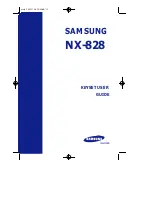
5
Fail-Safe
(Selector "J4" in Figure 7)
:
Selection of the fail-safe mode (See Table 1) will permit
the output contacts to be triggered in a manner that
assures proper control of loads in the event of power fail-
ure. To obtain fail-safe operation, use the relaxed output
as an alarm, thus a power failure will also be considered
as an alarm. Depending on which condition is most criti-
cal to signal (high level or low level), the selection can be
made by positioning the switch to one of the following:
FAIL-SAFE “HIGH” Position: When no material is
present, the relay will be energized. The relay will be
relaxed when material is sensed, or if power failure
occurs.
FAIL-SAFE “LOW” Position: When material is sensed,
the relay will be energized. The relay will de-energize
when no material is sensed, or if power failure occurs.
Status LED (See Table 1):
Green LED: Indicates power is applied and no material
sensed.
Red LED: Indicates power is applied and material is
sensed.
Not Illuminated: Indicates improper connected or no
supply voltage, or damaged circuit.
Table 1
TROUBLESHOOTING
PROBLEM: Sensor will not sense material.
CAUSE/SOLUTION:
1)
Verify power is applied to the sensor.
2)
Verify sensor status by observing LED’s:
GREEN = not sensed, RED = sense,
no light = no power.
3)
Verify sensitivity setting. Position sensitivity selection
in position Highest Sensitivity “A” thereby making the
probe more sensitive to “difficult to sense” materials.
4)
Verify probe coverage when sensing is expected.
The sensor is not designed to be “tip sensitive”.
Permit significant probe coverage before expecting
material sensing.
5)
Verify electrical connections.
PROBLEM: Sensor remains in “DETECT” mode even
when material is absent.
CAUSE/SOLUTION:
1)
Verify sensor status by observing LED’s:
GREEN = not sensed, RED = sense,
no light = no power.
2)
Verify the probe is not in direct contact with any inter-
nal vessel structure. If so, reposition sensor.
3)
Verify sensitivity setting. Position sensitivity selection
in position Lowest Sensitivity “C” therefore making
the probe less sensitive to “easy to sense” materials
and more immune to material buildup.
4)
Ensure there is no material buildup on probe.
Product buildup across the probe surface or
between the probe and vessel wall may create false
detection. Clean probe if necessary.
PROBLEM: Output contacts perform opposite of
designations (N/O, N/C).
CAUSE/SOLUTION:
1)
Check Table 1 for correct fail-safe switch selection.
Swap wire terminations of N/O and N/C if necessary.
Changing the fail-safe selection is not recommend-
ed unless fail-safe feature is not a concern to the
application.


























